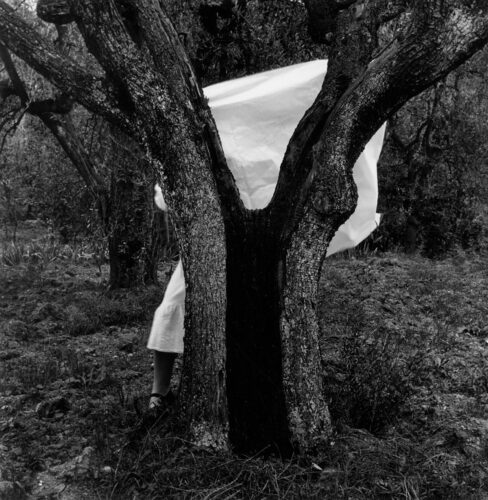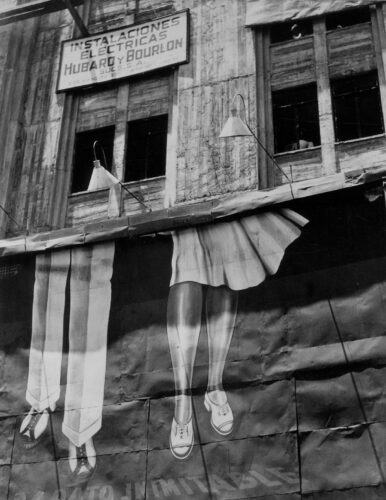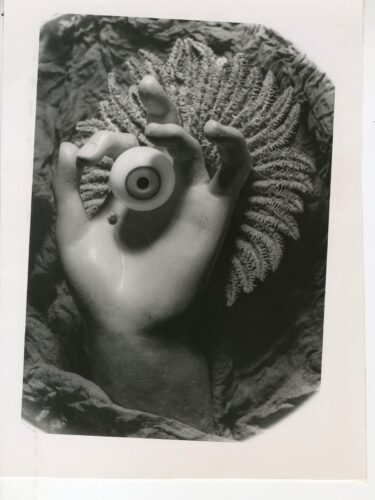EXPOSICIONES
Centenario Surrealista
Dora Maar, Man Ray, Kati Horna, André Kertész, Berenice Abbott, Germaine Krull, Lucien Clergue, Philippe Halsman, Edward Weston, Manuel Álvarez Bravo, Tina Modotti, Horst P. Horst, Graciela Iturbide, Francesca Woodman, Ana Mendieta, Lola Álvarez Bravo, Marion Scemama, David Wojnarowicz, María García, Barbara Morgan, Imogen Cunningham, Edward Steichen, HIRO, Genia Rubin, Henri Cartier Bresson
6 jun. — 21 sep. 2024
Leica Gallery Madrid / Fundación Loewe
— Madrid
Comisariado por
María Millán
Organiza
Fundación Loewe
Colabora
Leica Gallery Madrid
Horarios de la sede
Lunes a viernes
10:00 - 20:00
Sábados
10:00 - 14:00
16:00 - 20:00
Sede
Leica Gallery Madrid / Fundación Loewe
Calle José Ortega y Gasset, 34
Mapa
Una selección de fotografías de época, contemporáneas, collages y vídeo, de autores cuya expresión artística es el resultado del trabajo realizado en plena libertad de pensamiento, ajeno a tabús sociales o limitaciones comerciales.
El Primer Manifiesto Surrealista escrito por André Breton y publicado en 1924 cumple este año su centenario. Por esa época, el trabajo de Germaine Krull, Man Ray, Lucía Moholy o Kertész despuntaba en Europa. Edward Weston y Tina Modotti llegaban desde Estados Unidos a México, donde las tradiciones y la arrebatadora luz del país les lleva a explorar con la cámara otras formas de mostrar la belleza y el sentir de un pueblo. La Exposición Internacional del Surrealismo organizada por Breton en México en 1940, con obra de Manuel Álvarez Bravo, entre otros, concurre con la llegada de artistas como Leonora Carrington, Kati Horna o Remedios Varo que, huyendo de la guerra en Europa, se instalaron en México.
A partir de ahí, la ideología recogida en el manifiesto surrealista sirvió de base para varias generaciones de artistas de todo el mundo que, sin formar parte de un grupo concreto, ha reforzado con su agudeza otras formas de ver para poder apreciar aquello que pueda resultar discordante.
Selection of period and contemporary photographs, collages and videos by authors whose artistic expression is the outcome of work done with total freedom of thought, far from any social taboos or commercial constraints.
André Breton’s First Manifesto of Surrealism, published in 1924, is turning 100 years old this year. Around that time, the works of Germaine Krull, Man Ray, Lucía Moholy and Kertész were ascendant in Europe. Edward Weston and Tina Modotti went from the United States to Mexico, where the country’s traditions and dazzling light led them to use their cameras to explore other ways of showing a people’s beauty and feelings. The International Exhibition of Surrealism that Breton organised in Mexico in 1940, which featured the works of artists like Manuel Álvarez Bravo, dovetailed with the arrival of artists like Leonora Carrington, Kati Horna and Remedios Varo, who were fleeing the war in Europe and settled in Mexico.
From then on, the ideology contained in the Manifesto of Surrealism served as the foundation for several generations of artists all over the world who were not members of a specific group but whose acuity reinforced other ways of seeing in order to appreciate what may seem discordant.





